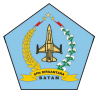- By Pusat Data dan Informasi SPND Batam
- 14 Aug 2024
- 663
Propeller Fundamental (Part 1)
Apa itu Propeller?
A Propeller
(or Airscrew) is a device used to convert the rotational Power of the Engine into useful force to propel
the
Aircraft forward by driving the surrounding
air rearwards
This is termed Thrust, and it follows Newton’s 2nd Law of Motion which states that “force is
proportional to the product of mass and acceleration” as Propulsive Power
A propeller moves a large mass of air rearward, at a relatively slow speed, as opposed to a gas turbine engine,
which moves a small mass of air rearward at a high speed.

Pendahuluan
As the science of aeronautics progressed, propeller designs improved from flat boards, which merely pushed the air backwards, to airfoil shapes. These airfoils produced lift to pull the aircraft forward through aerodynamic action.
As aircraft designs improved, propellers were developed which used thinner airfoil sections and had greater strength. Because of its structural strength, these improvements brought the aluminum alloy propeller into wide usage. The advantage of being able to change the propeller blade angle in flight led to wide acceptance of the two-position propeller and, later, the constant speed propeller system.
Today, propeller designs continue to be improved by the use of new composite materials, new airfoil shapes and multi blade configurations
Terminologi
A propeller is a rotating airfoil that consists of two or more blades attached to a central hub which is mounted on the engine crankshaft.
1. Blade
- Leading Edge
- Trailing Edge
- Mean camber line
- Chord line / Blade Chord
2. Blade Stations
- Section between Root and Tip
- The end of each section is said to be a “blade station” where the blade is checked to prove the accuracy of its shape and angle.
- Between each station, the blade is machined to provide a smooth even change in its profile.
3. Blade Twist
- The variation in the angle of incidence of a blade between the blade root and the blade tip.
- The amount of thrust produced by a propeller is determined by the pitch angle of the blade at each blade station and by the speed at which the blade is moving through the air.
- In order to maintain a constant thrust along the blade span, the blade angle must be twisted.
4. Angle of Attack
- Angle of Attack is the acute angle between the chord line of a propeller blade and the relative wind.
- Angle of attack relates to the blade pitch angle, but it is not a fixed angle. It varies with the forward speed of the aeroplane and the RPM of the propeller.
5. Blade Angle
- The blade angle is the angle formed between the chord line and the plane of rotation of the propeller and consists of the helix angle and the angle of attack (AoA).
- To ensure that a propeller operates efficiently.
- A wing stalls at around 16 degrees angle of attack, and this also applies to a prop blade, however, a prop in flight moves forward in a spiral path, so that the actual angle the blades meet the relative air is smaller, as the blade angle is the sum of the helix angle and the Angle of Attack a to the plane of rotation

